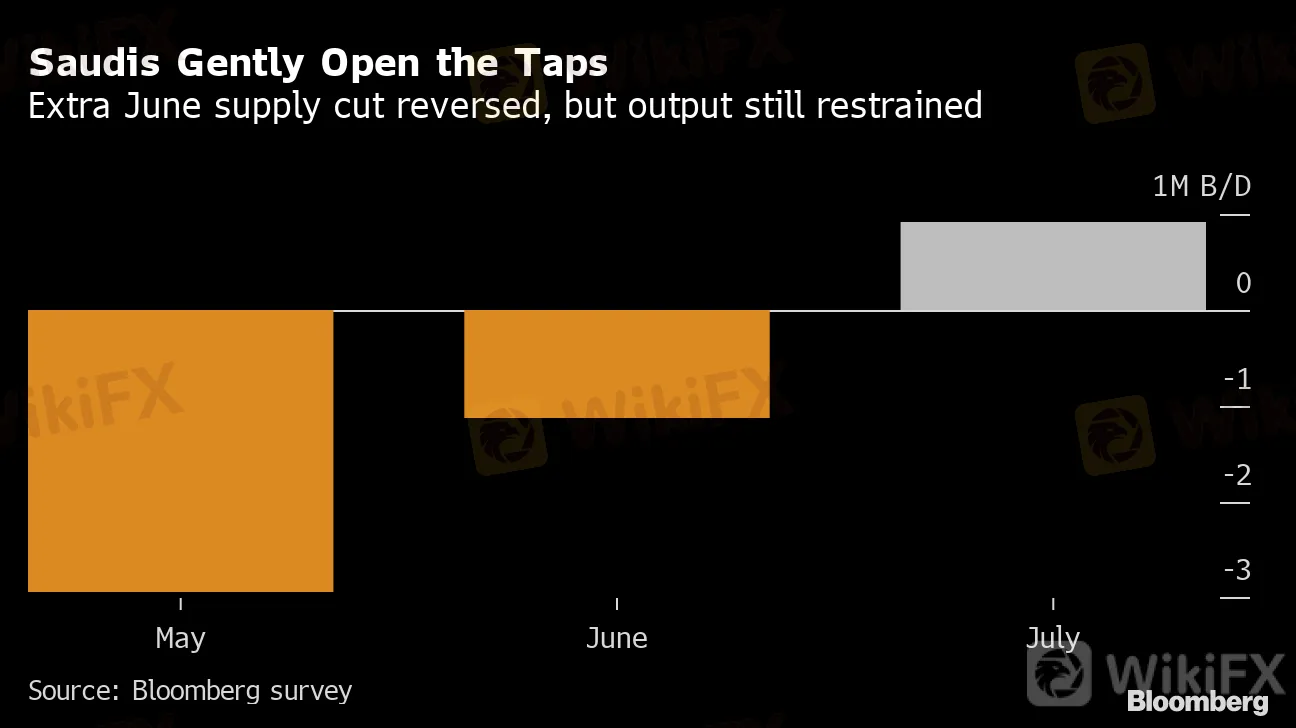简体中文
繁體中文
English
Pусский
日本語
ภาษาไทย
Tiếng Việt
Bahasa Indonesia
Español
हिन्दी
Filippiiniläinen
Français
Deutsch
Português
Türkçe
한국어
العربية
OPEC Raised Supply Last Month as Gulf Nations Ended Extra Cuts
Abstract:OPECs crude production rose last month as Persian Gulf members phased out extra supply cutbacks, but the cartel largely persevered with its strategy to revive the global oil industry.
OPECs crude production rose last month as Persian Gulf members phased out extra supply cutbacks, but the cartel largely persevered with its strategy to revive the global oil industry.
Saudi Arabia, the United Arab Emirates and Kuwait restored the additional output taken offline in June, when they had amplified efforts to disperse an oil glut left behind during the coronavirus crisis.
The Organization of Petroleum Exporting Countries increased output by 900,000 barrels a day to 23.43 million a day, according to a Bloomberg survey. Its based on information from officials, ship-tracking data and estimates from consultants including Rystad Energy AS, Petro-Logistics SA, Rapidan Energy Group and JBC Energy GmbH.
Saudis Gently Open the Taps
Extra June supply cut reversed, but output still restrained
Source: Bloomberg survey

OPEC and its partners are continuing to restrain output in accordance with their pact to limit production to tackle the steepest collapse in demand ever seen. Their labor has helped almost triple crude prices from the two-decade low in late April, lifting Brent futures in London to about $43 a barrel.
As oil consumption recovers with the restart of economic activity worldwide, the coalition of producers is poised to open the taps even further this month. The group will return 1.3 million to 1.5 million barrels a day to the market this month, according to Saudi Arabia.
Still, there are concerns as many countries struggle to contain the epidemic and some are being forced to reinstate lockdown measures.
Saudi Arabia, OPEC‘s biggest producer and de facto leader, is moving with caution. While it boosted output by 920,000 barrels a day last month, the average remained below the limit it’s allowed to pump under the agreement, at 8.45 million a day.
Other members arent showing the same discipline.
Iraq and Nigeria made no progress in implementing their promised supply cutbacks, let alone the additional curbs they had pledged in compensation for earlier non-compliance.
Russia, the biggest non-OPEC member in the OPEC+ alliance, also increased production in July, according to preliminary data from the Energy Ministry.
— With assistance by Elisha Bala-Gbogbo, Salma El Wardany, Anthony Di Paola, John Deane, Prejula Prem, Lucia Kassai, Fabiola Zerpa, and Brian Wingfield
Disclaimer:
The views in this article only represent the author's personal views, and do not constitute investment advice on this platform. This platform does not guarantee the accuracy, completeness and timeliness of the information in the article, and will not be liable for any loss caused by the use of or reliance on the information in the article.
WikiFX Broker
Latest News
eToro Expands Nationwide Access with New York Launch
Webull Partners with Coinbase to Offer Crypto Futures
Why Is UK Inflation Rising Again Despite Recent Lows?
Hackers Charged for $11M Crypto Theft Using SIM-Swaps
Role of Central Banks in the FX Market
FCA Alerts Against Sydney FX
What Makes Cross-Border Payments Easier Than Ever?
Trader Exposes Unethical Practices by STP Trading
Interactive Brokers Launches Tax-Friendly PEA Accounts in France
Google Warns of New Deepfake Scams and Crypto Fraud
Currency Calculator


